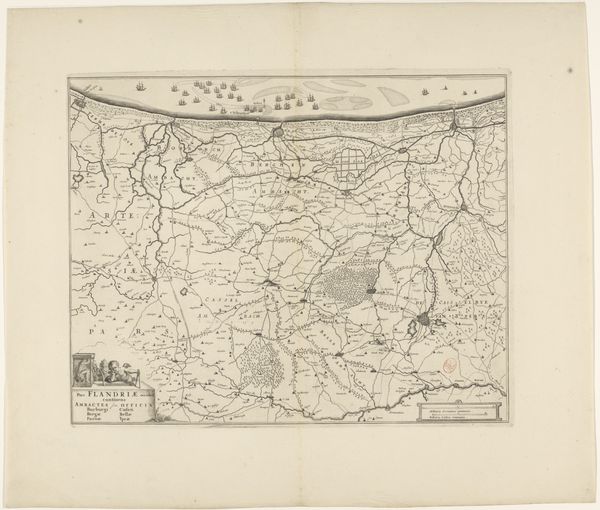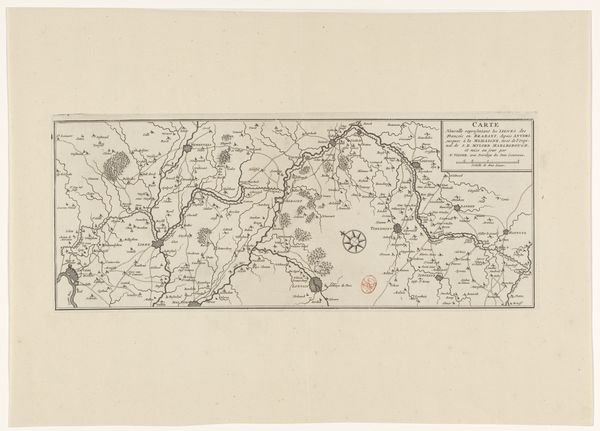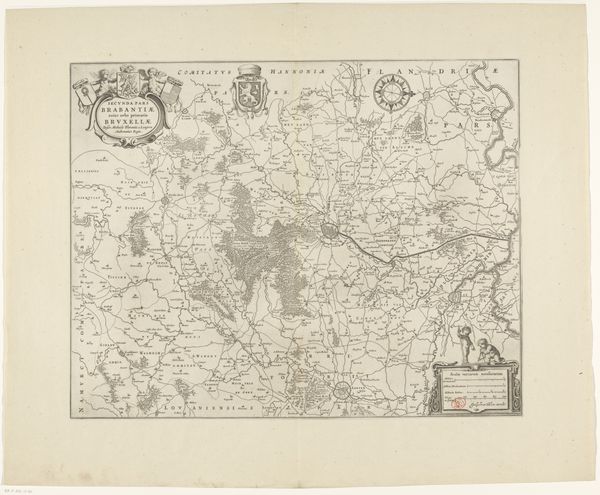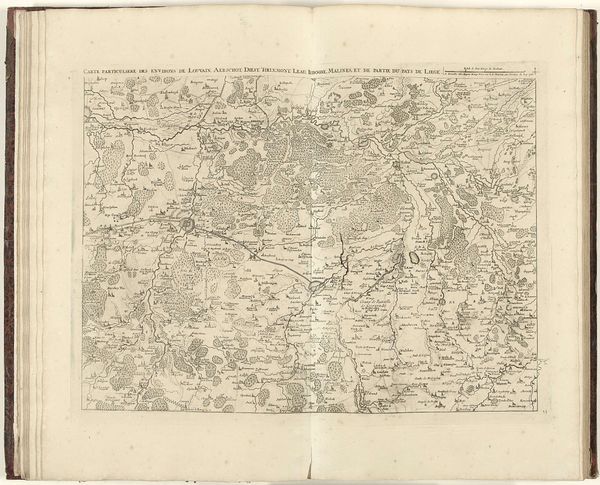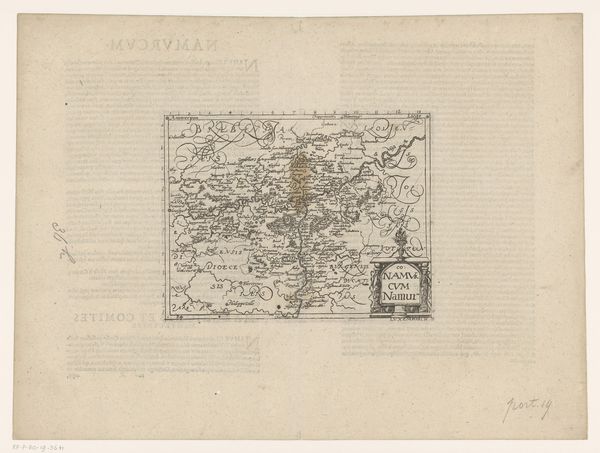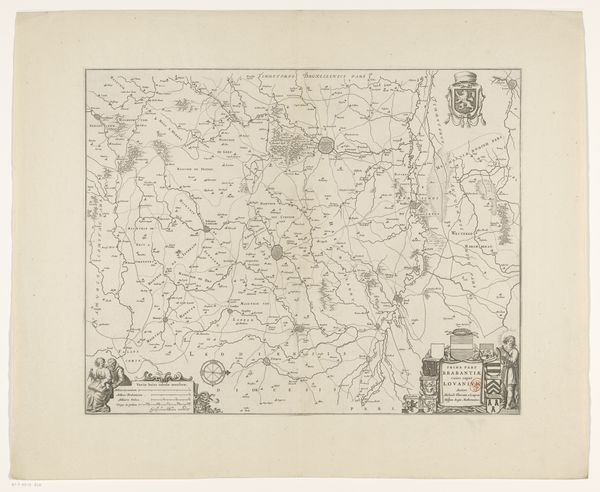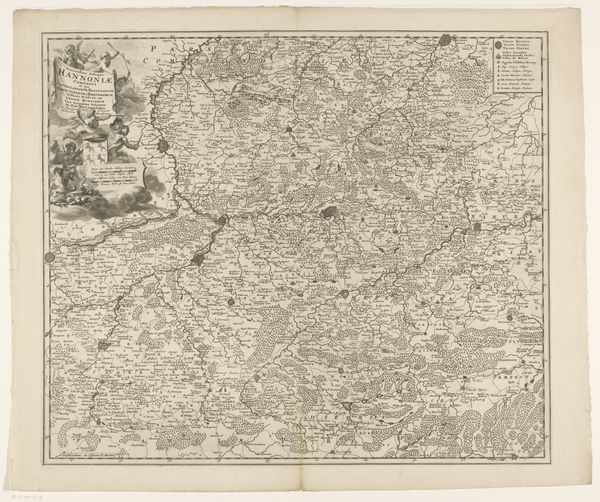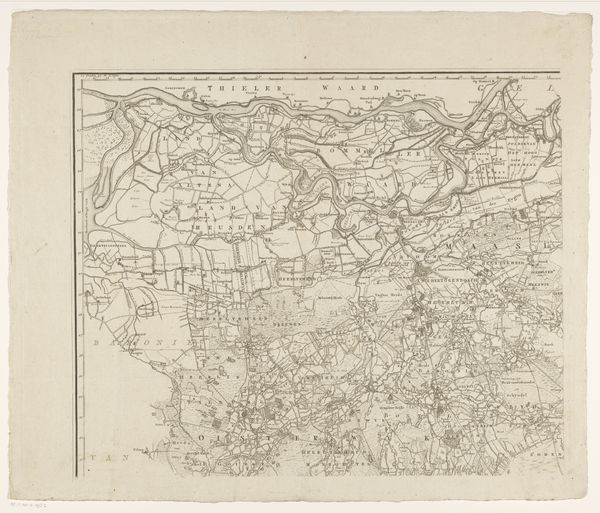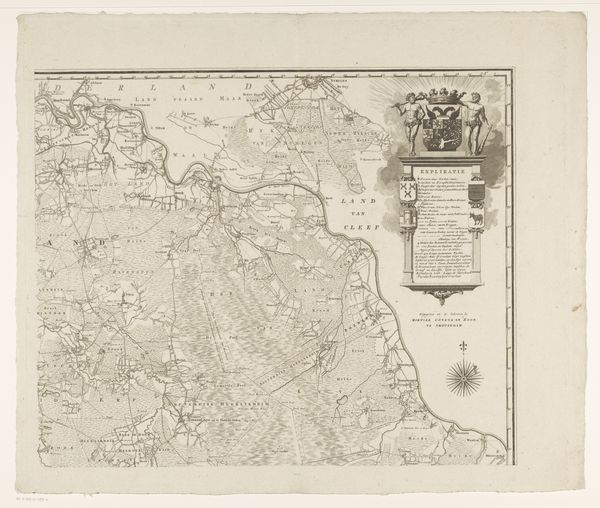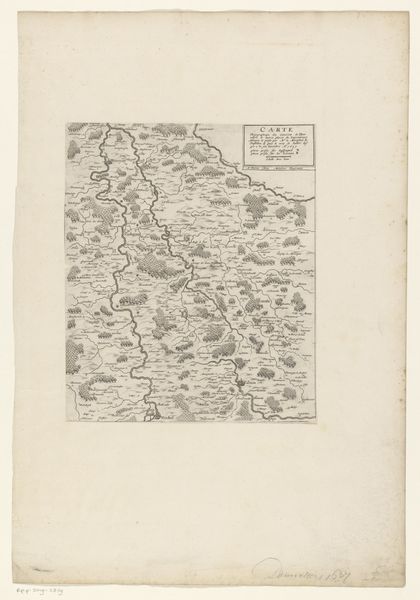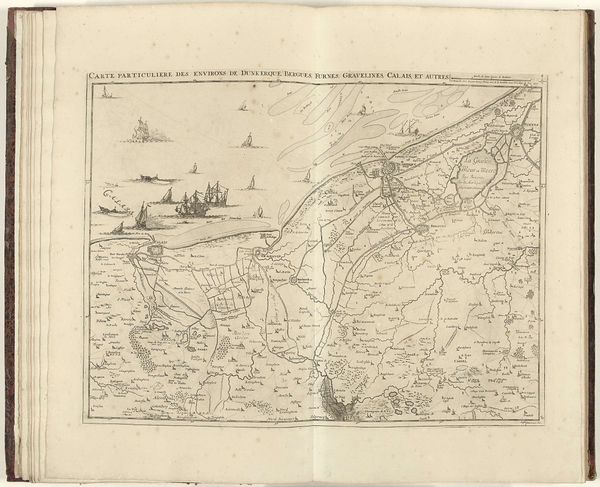
print, engraving
#
neoclacissism
# print
#
old engraving style
#
engraving
Dimensions: height 389 mm, width 471 mm
Copyright: Rijks Museum: Open Domain
Editor: This is "Kaart van Vlaanderen en een deel van Zeeland," a map of Flanders and part of Zeeland, engraved by C.F. Gürsch in 1785. The sheer intricacy of the engraving is astounding! All those tiny lines forming a detailed landscape... It makes you wonder about the process involved. What can you tell me about the materials and production of a piece like this? Curator: Well, let’s think about the labor that went into creating this image. Copperplate engraving was a highly skilled craft. The engraver, Gürsch in this case, would have used specialized tools like burins to meticulously carve lines into a copper plate. The ink applied to the plate, the type of paper used for the print – each choice has an impact on the final product. This isn't just an image; it’s evidence of a specific social and technological moment. How do you think the material nature of this map might have affected its use and circulation? Editor: That's interesting. Because it's a print, multiple copies could be made, but the detail must have been time-consuming. Did the accessibility of prints like this challenge the status quo in any way? Curator: Precisely! Think about who would have commissioned, owned, and used such a map. Was it primarily for the wealthy elite, for military strategists, or increasingly available to a burgeoning middle class? Consider the implications for disseminating knowledge and shaping perceptions of territory and power. And look closely – what does the style of lettering or the inclusion of certain landmarks tell us about the values of the society that produced and consumed this object? Editor: So, by examining the materials and production process, we're not just looking at a map, but at the labor, the economy, and the power structures of the late 18th century. Curator: Exactly. It allows us to move beyond simply seeing the image and delve into the complex network of relations that brought it into being. It’s about understanding art as a form of material culture, deeply embedded in its time. Editor: This perspective really shifts how I see this artwork. I appreciate knowing that the art’s value can go beyond subject or Neoclassical style, highlighting its construction and social reach. Thank you! Curator: Indeed. By considering the material conditions of its creation, we unlock new avenues for interpreting its meaning and significance. A map then is no longer a given, but actively made.
Comments
No comments
Be the first to comment and join the conversation on the ultimate creative platform.
